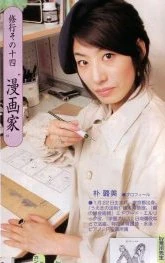
Hiromou Arakawa is a Japanese manga artist who created the best-selling series Fullmetal Alchemist among many other manga projects such as Silver Spoon and The Heroic Legend of Arslan. Like most creatives, Hiromou built on her ideas over time. In our reading from Sawyer's Improvisation and the Creative Process, Sawyer discusses the problem-solving style of painting, and "starting with a relatively detailed plan for a composition and then simply painting it; "problem-solving" because the painter defines a visual problem for herself or himself before starting, with the execution of the painting consisting of "solving" the problem." Hiromou Arakawa in a interview a few years ago discussed her development of Fullmetal Alchemist's plot in similar terms by saying "I knew from the start the major plot points: the Ishval war, the battle in Central City, etc. I also knew if the Elric brothers would get their bodies back, either entirely or partially. What was decided as we went along was the way they would bring answers and what answers they would get in the story. The characters were the ones who naturally developed the story."
Hiromou Arakawa did not start off her career by creating Fullmetal Alchemist, which has sold over five million copies, and has been adapted into anime and film. She created the story Stray Dog that featured many elements that would show up in Fullmetal Alchemist. A Mary Sue compared the following two pages from the two works

The page on the left is from her one volume early story Stray Dog, and the picture on the right is of Edward Elric, the main character from the accurate anime adaptation of her later, most famous work- the Fullmetal Alchemist manga (Fullmetal Alchemist: Brotherhood). As pointed out in the Mary Sue piece, the main characters are visually similar in appearance. In addition, the referral of the main character in both cases as "a dog of the military" gets recycled.

In the above page from the Fullmetal Alchemist manga, Edward Elric-the same character featured on the top right-is also referred to as "a dog of the military." These comparisons show a clear evolution of Hiromou Arakawa's creativity in these ideas, revisiting the same concepts over time. Hiromou Arakawa probably developed and finessed her ideas over time, as most creatives do.

Hiromou Arakawa tends to draw herself as a cow and prefers it to photographs of herself. Here is one instance of that.
It is a reference to her childhood growing up on a farm. One of the most famous themes of Fullmetal Alchemist Brohterhood is the concept of equivalent exchange in alchemy: in order for any transmutation to occur, something equal must be exchanged. Where did she get this concept from? Farming. In an interview, Arakawa claimed "This concept comes from my farmer background: the way you feed matches up the efforts you’re making. The more you love your animals, the more they give it back to you. The more you take care of them, the better their meat will be. There are also unpredictable events : if the weather’s terrible, you’ll need even more work to achieve better results. Equivalent exchange is based on the energy you’ll deploy to realize the task that was assigned to you." As Lubart points out in the chapter "Creativity Across Cultures," "Creativity does not occur in a vacuum. When we examine a creative person, creative product, or creative process, we often ignore the environmental milieu. We decontextualize creativity. The environment, however, is always present and can have a profound effect on creative expression. The environment may be involved in stimulating and supporting creativity as well as defining and evaluating." There is no Fullmetal Alchemist without Hiromou Arakawa's farm upbringing-you cannot isolate the work from the author, and you cannot isolate the author from the work. Although Arakawa's Fullmetal Alchemist is an action-packed story about alchemy, it can't be examined without looking at Arakawa's upbringing in a small farm. Arakawa returns to her upbringing when writing Silver Spoon, a manga about a boy living on a farm setting. In creativity, the products cannot be isolated from the author. Although the works may be completely different, the thematic threads in Arakawa's works force any analyst of her work to consider her creative development over time and her past as a way to understand Arakawa's works on a deeper level.

Silver Spoon, the manga Hiromou Arakawa started after finishing her bestselling Fullmetal Alchemist. It is based on her life growing up on a farm.
Links
http://clewilan.tumblr.com/post/44966298003
Lubart Creativity Across Cultures
Sawyer's Improvisation Across Cultures
"Get to Know a Manga Artist: The Unstoppable Hiromu Arakawa" from the Mary Sue https://www.themarysue.com/hiromu-arakawa-part-1/
This is actually really interesting! I like that the effects of a creative's environment are discussed, because I think that is something often overlooked. Based on all our creative's backgrounds, it is obvious that environment shaped them and the innovations/impacts they made in life. In this case, Arakawa's farm background contributed a major theme to her most famous work. Had her environment growing up been different, would she still be able to produce such a popular manga? As stated in the article, you cannot separate the work from the author. So had her environment been different, it is possible she may not have had as much success
ReplyDeleteI really liked this post. I was a huge fan of Fullmetal alchemist in high school. The aspect of problem solving evolves I think for a mangaka. Because they are not only painters drawing the picture but also writers and directors telling the story and choosing the best viewpoints to use to create a dynamic story. I also find it very interesting how her past connects to her works. I never would have compared dystopia Fullmetal Alchemist to a Farm. i find it interesting how our past, environments, and experiences affect our creativity sometimes in subtle ways.
ReplyDelete